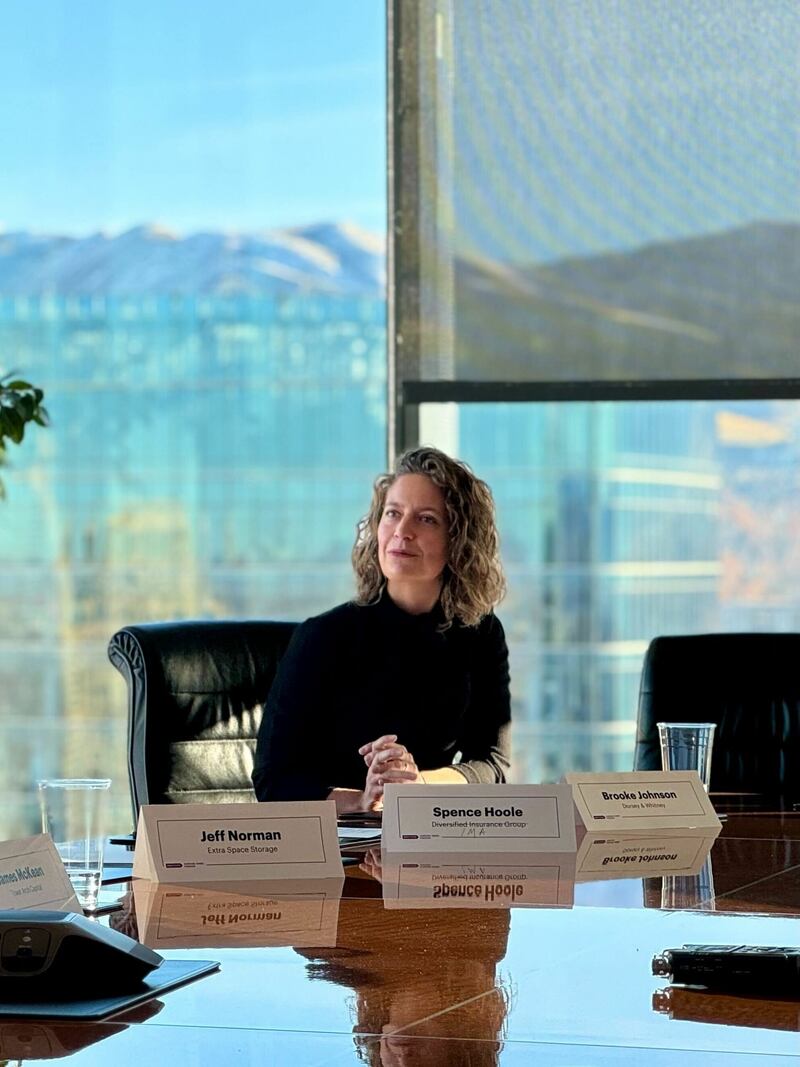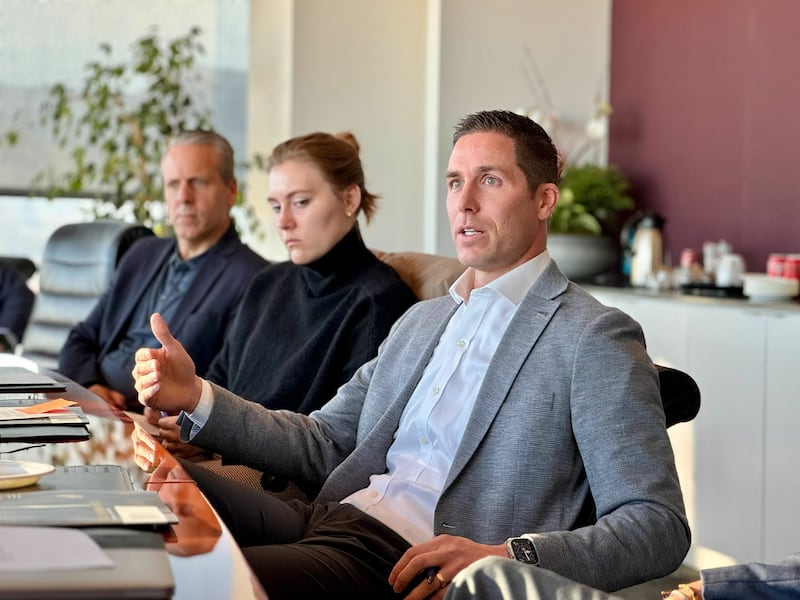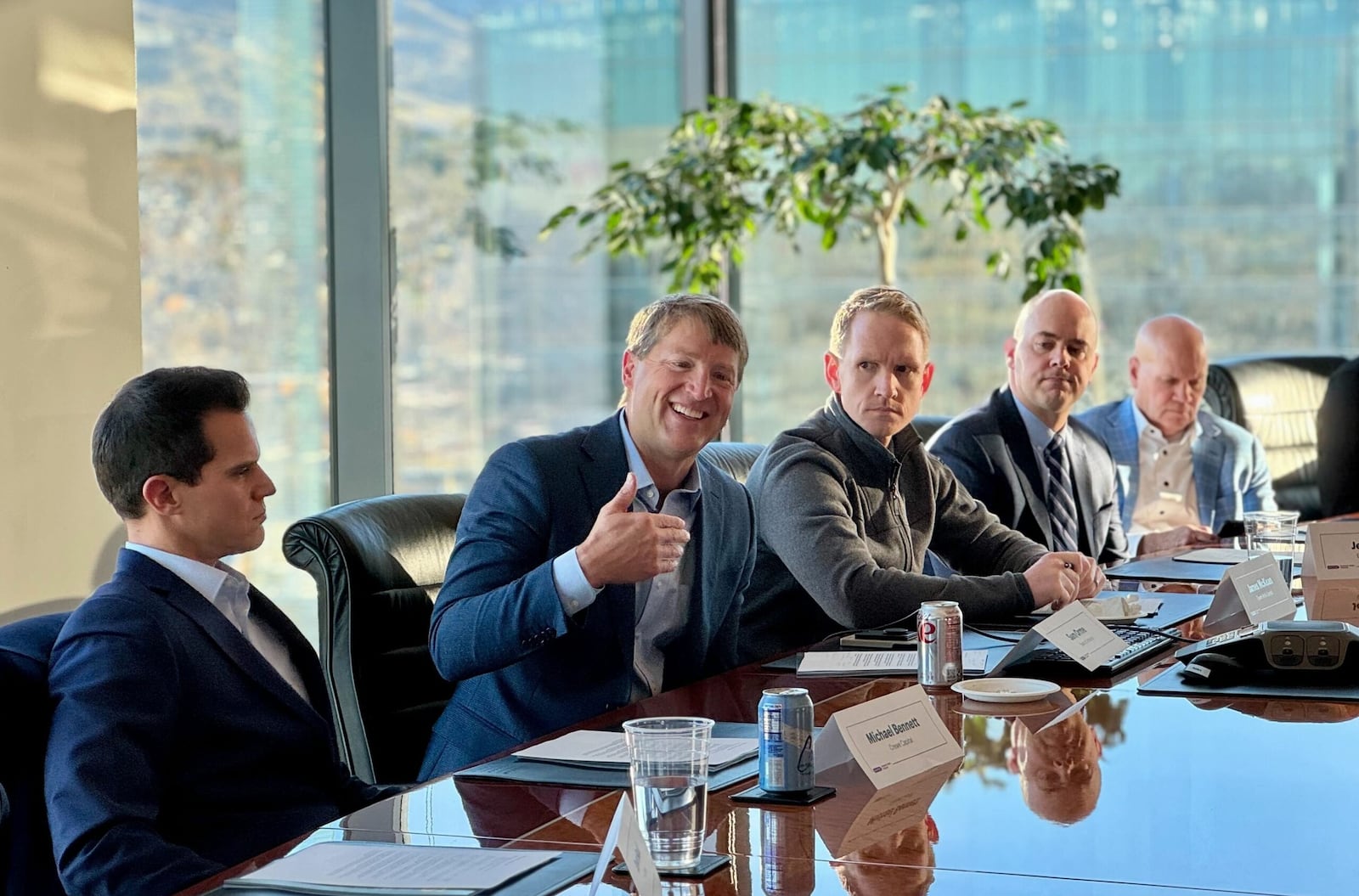Last month, Utah Business partnered with Dentons Durham Jones Pinegar to host a roundtable on mergers and acquisitions in Utah. Moderated by James Morgan, managing director for Forbes Partners, they discussed deal structures, IPO market conditions, updating internal processes and more.
How has the shifting macro landscape altered your corporate outlook and appetite for growth via M&A?
Jeff Norman | SVP, Capital Markets | Extra Space Storage
We did the deal between Extra Space Storage and Life Storage in a stock-for-stock exchange to try to tease out some of the market volatility. It was approved by the SEC without any real questions or comments and approved by both companies’ shareholders in an overwhelmingly positive manner. As we announced synergies, we thought we’d have the credibility to get valuation on day one, and that has not been the case. It’s definitely turned into a prove-it story.
David Lawless | VP, Investment Banking | D.A. Davidson & Co.
A lot of our clients are searching for various growth levers outside of organic cash flow. There’s still concern about financing, which I think is one of the main catalysts for the suppressed M&A activity over the last year. Our clients definitely have potential targets; it’s just a matter of timing.
Craig Primo | Managing Director & Owner | K2 Securities
Our clients on the buy-side are taking advantage of the opportunity. The problem is they need to wait until there’s full capitulation. We haven’t seen that yet. M&A transactions were down 70 percent. There needs to be a period of time until those transactions trade or the owners capitulate on value. It’s a bit of a standoff until that flushes through.
Samuel Orme | Managing Director, Global Investment Banking | Bank of America Merrill Lynch
Whenever there is a lack of liquidity via an IPO or an M&A exit, it’s challenging to recycle that cash through the system. 2024 is going to be better simply because we have visibility on interest rates. But we still have leverage that’s gone from four times to two-point-ninety-nine times because no bank wants to do a three-times deal—those are permanently adjusted pricing expectations. 2024 is going to be more mellow than U.S. investment bankers might want it to be.
On the sell-side, what are the current dynamics in terms of going to market?
Michael Bennett | Managing Partner | Crewe Capital
We had several deals close this year, but a lot of them started last year. This year started with the mini banking crisis, geopolitical risk and rising interest rates. But businesses that were doing well despite the economic conditions were highly sought after. If you could show you were performing in a low-interest-rate environment, a high-interest rate environment, a contracting market or an expanding market, you were more valuable.
What is the current financing market providing? How have deal structures changed?
David Stahl | President Middle Market Banking | Hillcrest Bank
Debt financing markets are still open. We’re seeing some leverage expectations come down, and I think everybody knows what’s going on and has adjusted relative to that. The private capital markets and private debt markets have helped on some of the higher-levered deals, but our pricing has stayed constant.
David Andersen | Market President | UMB Bank
We’ve seen banks pull back. There were tight labor constraints, but there was still access to labor, and there wasn’t the cost-of-goods-sold constraint in the last decade. Private equity firms are more strategic in their experience, looking at where money is being put into the economy and investing there.
Samuel Orme | Managing Director, Global Investment Banking | Bank of America Merrill Lynch
A lot of my peers believe we’re creating a private debt bubble that’s going to have to be reckoned with. I am not so sure. I think they’ve been pretty conservative this time around. Valuations are not coming down for really good platform investments.
David Lawless | VP, Investment Banking | D.A. Davidson & Co.
From a leverage standpoint, we are seeing that the risk appetite has been significantly reduced. Rather than chasing higher-leverage transactions, lenders are only doing bankable deals. As a result, we are seeing higher sponsor equity contributions and significantly more structure—such as seller notes—to bridge the gap.


On the buy-side, where is the level of competition? How is it impacting valuation and your strategies?
James McKean | Principal | Tower Arch Capital
We do see competition. When it comes to buy and build, we’ve seen a lot of success in the past year. We’ve got a few platform companies who are doing pretty aggressive buy and build strategies. In that world, founders are interested in joining larger platforms, and the CEOs and management teams have really great relationships. Competition—no doubt it’s high. But for people looking to sell and trying to find creative ways to structure a deal when leverage isn’t available, there are earnouts, higher role structures or even other ways that we can get the value that the seller is looking for.
David Andersen | Market President | UMB Bank
With very strategic private equity funds, they stick to their knitting. The sellers in this environment are interesting. Those that have sold through COVID-19 have sold through the highest multiples ever on record. Those that didn’t sell are looking more for strategic partners. It’s about value and what’s going on with employees.
Spencer Hoole | President, Mountain Region | IMA
I found a statistic that said 1,200 private U.S. companies are going to run out of cash in 2024. The thought is that this liquidity crunch is going to create an uptick in M&A activity. Almost all Utah tech companies have had reductions recently to improve their margins. Those companies are going to be looking for capital and/or partners. We don’t want an uptick in bankruptcies, but I think we’re going to see an uptick in M&A.
How has your work changed recently in terms of processes and end targets or goals?
Mark Erickson | Managing Partner | Tanner, LLC
The deals that are getting done are with businesses that had strong cash flow and their house in order. The ones that were a big mess didn’t, or it took way more time and way more effort to get them over the finish line. As we meet with clients and sellers, we strongly encourage them to get their house in order and to keep it in order.
Tom Taylor | Shareholder | Dentons Durham Jones Pinegar
Before the great recession, a lot of companies were going into deals with pretty light due diligence, and they got stung. Since then, due diligence has become ‘no stone unturned’ due diligence. Everything is being looked at sometimes two, three or four times. Quality of Earnings reports [Q of E’s] are being done on every deal. Today, there are a lot of AI-based tools to help accelerate the due diligence process.
Craig Primo | Managing Director & Owner | K2 Securities
We’re asking our clients to delay right now because the valuations really haven’t come back, but that gives us time to get ready in the process. The cost of due diligence has gone up during my career; it was about $250,000, but now it’s up to a million dollars.
Michael Bennett | Managing Partner | Crewe Capital
We will have debt stapled to even a sell-side mandate now. We are also doing a lot more prep. We’re seeing construction clients make sure the smaller ones are having project-based accounting. We’re doing billing and coding audits, which we hadn’t done before for smaller-sized businesses. The buyer pool has also changed a lot from what seemed to be traditionally a ton of just private equity funds and middle market private equity funds.
On the legal front, what has been your recent experience with deal terms?
Brooke Johnson | Associate | Dorsey & Whitney, LLP
Market uncertainties bring creative structures to bridge valuation gaps. The most common one we still see are earnouts. We are also seeing a move toward EBITDA-based revenue and EBITDA-based earnouts. We advise sellers to only take a deal they like without the earnout just because they can be so risky.
Tom Taylor | Shareholder | Dentons
On the sell-side, start looking at your legal, insurance and accounting issues now. Settle those well in advance of a deal so that you are ready to go when the M&A windows open again. Do a deal audit—look at the company from a global perspective and take care of all of the issues that you’ve just never had time to deal with. If you aren’t ready right away, they’ll move on and find something else.
Have your internal processes changed over the past year due to growth?
David Stahl | President Middle Market Banking | Hillcrest Bank
Our process has stayed the same. I’ve been surprised to see that despite everything, we take the same approach. We’re probably the last term sheet in a process, but it’s fully backed, it’s ready to go and we don’t return it.
How do you develop a thesis for a new portfolio company? How are you looking at the world as you go out and look for new platforms?
James McKean | Principal | Tower Arch Capital
We look for those teams who want to stick around. If the team wants to stay there for five or 10 years, we’re partnering with them. It’s harder to step into a business where we have to do a big executive change. Regardless of the industry, we look for that.

How did you approach the integration process this year? How important is it, and what are the key things that can go right and go wrong?
Jeff Norman | SVP, Capital Markets | Extra Space Storage
For us, the key thing was getting the target’s assets onto our platform as fast as possible. We had a very fast close because we knew every day that went by was a potential value loss. We have a pretty refined and sophisticated pricing system and also a sophisticated digital marketing system. The faster we could get them on our point of sale system, the faster we could then layer in those other practices to bring that value up.
When clients want to go to market, what do you tell them? What are the things they have to prepare in terms of due diligence?
Mark Erickson | Managing Partner | Tanner, LLC
Several times, we have seen a business doing well get caught up in the transaction, and when the next quarter comes, they’re not hitting their mark anymore because they took their eye off the ball. Then, the buyer pushes pause to see if things come back or if they need to reprice the deal. Whether this transaction happens or not, you just have to run your business the best way you possibly can and continue to generate what made you attractive for this transaction.
Jeff Norman | SVP, Capital Markets | Extra Space Storage
If I were ever advising a smaller seller, I would say it’s going to feel expensive to pay really good attorneys and really good bankers and whoever else to do this deal. You’re going to hate it because you’re a scrappy founder. Trust me, the best thing you can do is just run your business and keep running it well to protect the value. It’s a drop in the bucket at the end of the day.
Brooke Johnson | Associate | Dorsey & Whitney, LLP
These companies that are selling have been very efficient and have gotten away with certain processes that won’t fly with the strategic or good PE [private equity] buyer. We advise sellers to go back and look at their contracts with key customers and look at how those contracts transfer. Don’t rely on the goodwill relationships and practices that are not actually on paper.
Spencer Hoole | President, Mountain Region | IMA
When you look at companies that are well-run and sophisticated, they generally have good claims histories. They generally have good programs in place, and it’s just one more box to check off in terms of a company that’s ready to be purchased. Good companies get bought; bad companies get sold.


